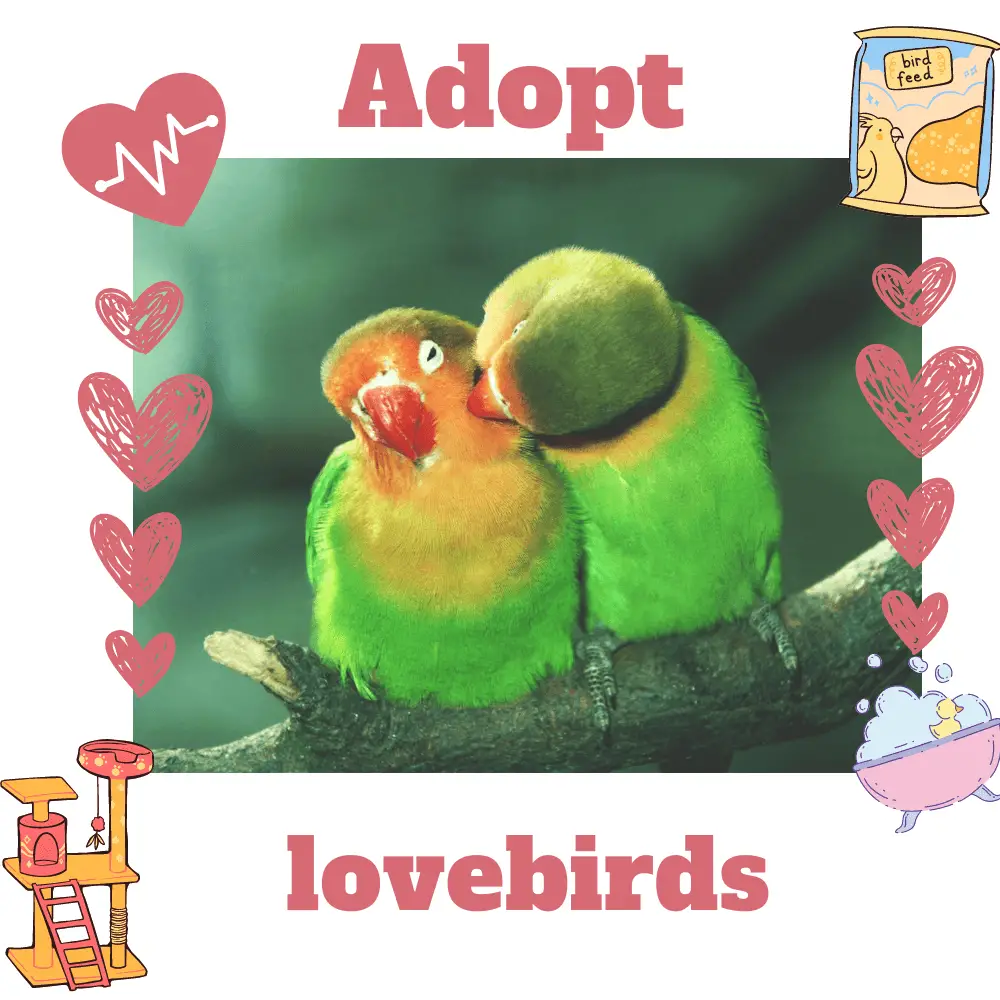
Adopt lovebirds: Lovebirds are small parrots with colorful feathers and unique personalities. As a pet, they are dedicated and playful with their owners. With good care and attention, they can live well for 15 years. Like all parrots, they must be kept with congeners.
Buy a Lovebird
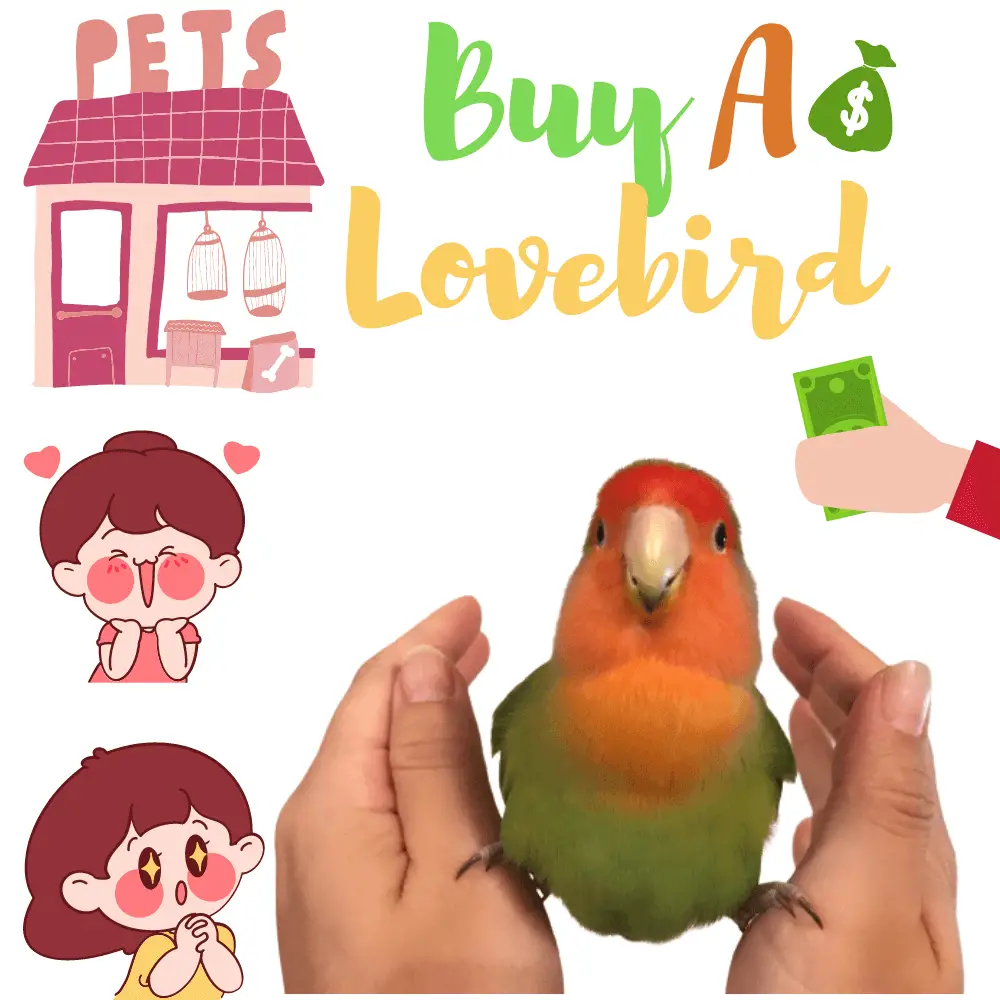
Consider getting 2 males. You can keep 2 males together rather than a couple in order to avoid breeding periods and the distance from the human in these conditions when they are raised by hand and tamed.
Nevertheless, hand-raised birds that the owner will make sure to stimulate every day will remain very tame, since they have an excessively social behavior and can forge strong bonds with many congeners including humans.
- According to a myth that has a hard life, the lovebirds are mean or aggressive, especially the females who mark their territory in the cage. While most breeders think it’s better to have males as pets, they can also have territorial behavior and off fingers that would get too close. Nevertheless, the lovebirds males and females have a calm temperament and, to prevent any aggression, you must learn to respect your bird: interaction is suggested, but never imposed. Decoding the language of its lovebirds helps to avoid coming to bites.
Lovebird Species
Familiarize yourself with the different species of lovebirds. There are many species of lovebirds, but the best known are those listed below.
- The lovebirds rose-throat: these small birds are the best known. They measure 15-18 cm and weigh about 50 grams, have green and blue feathers, and have a pink face. Some birds have plumage of another color that ranges from albino white to dark purple.
- The lovebirds masked: this breed has an eye-ring, an orange beak, yellow feathers on the chest, and green wings. Some breeders claim that it is less aggressive than other breeds.
- Fischer’s lovebirds: they are also known as lovebirds with eye rings because of their white ring around the eyes. They are smaller than the other breeds mentioned above and emit a high-pitched sound that is easy to recognize.
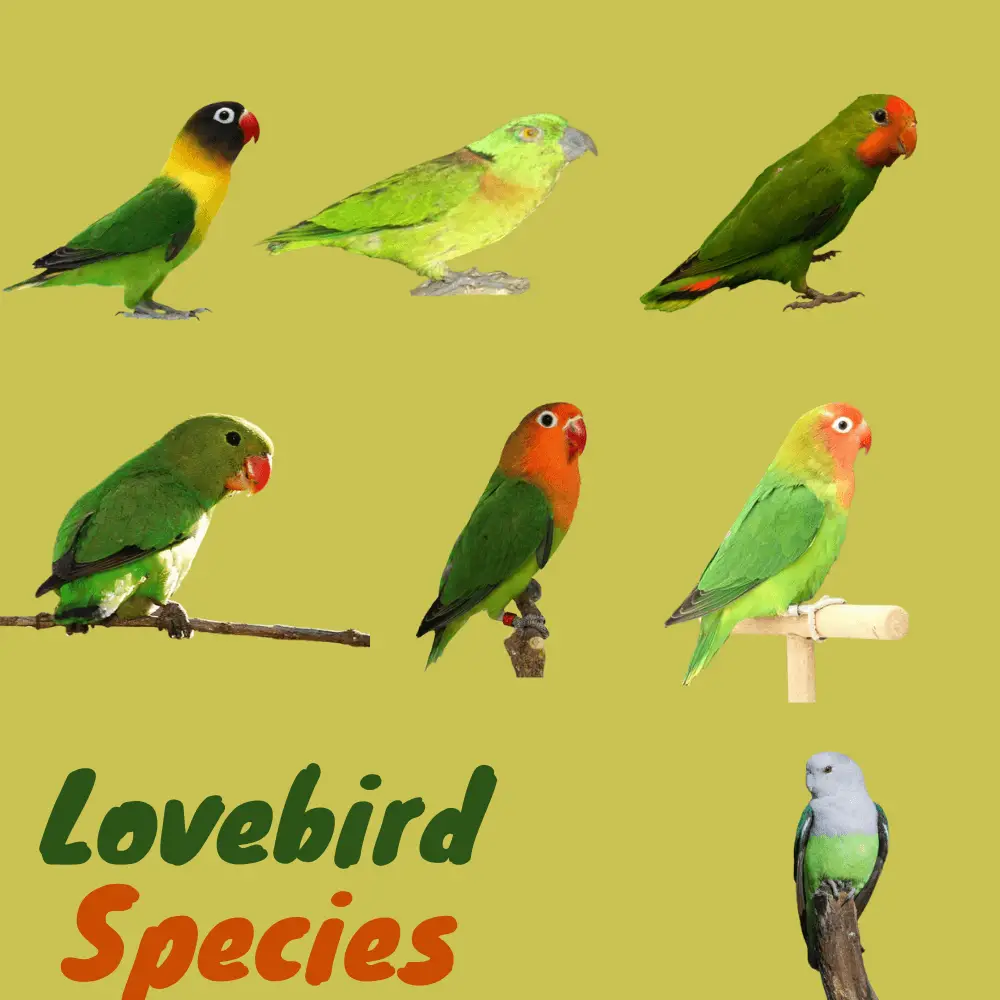
- Rosy faced Lovebird
- Peach faced lovebird baby
- Fischer’s Lovebird
- Black-cheeked Lovebird
- Lilian’s Lovebird
- Yellow-collared Lovebird
- Red-headed Lovebird
- Gray-headed Lovebird
- Black-collared Lovebird
Lovebird Breeding
Most pet stores offer lovebirds. But the breeding conditions are not known at the base and it is always better to meet a breeder, especially when looking for a tame and hand-bred bird.
Seeing him evolve in an aviary with others is very important to ensure his good health, which is not often allowed by pet stores that can have sick birds.
Do not buy a bird whose wings are trimmed: it will take years to grow back. The size of the feathers of the wings is encouraged for the taming of “wild” parrots.
Except that it greatly reduces the stability of the bird that will no longer dare to move from the shoulder of the owner (giving the illusion that it is tamed).
The feeling of insecurity and malaise experienced by a parrot with trimmed wings are powerful enough to sometimes lead to pecking. Before buying any, you should pay attention to the points listed below.
- The bird must be healthy, full of spirit, active, alert, and have clear eyes. It must also have a clean wax, a fleshy nasal contour, and sharp nostrils.
- Watch him eat and drink to make sure he has an appetite. The lovebirds must be clean in addition to having a sharp plumage and well pressed against its body. These feathers should be smooth and should not be fluffy or ruffled. A damaged tail is a sign of a bird that is too enclosed and confined to an unsuitable space. The legs of the bird must also be smooth and have no bumps, crusts, or roughness.
- The bird should chirp, rattle with its beak, and whistle. Most lovebirds people love to communicate with new faces when other birds are shy or frightened at the sight of new people. A healthy bird will be open and curious, but will also be cautious and suspicious.
- If possible, ask to hold or touch the bird. Make sure that the bird wants to interact with you and does not give beaks, as this is a sign of worry and defensive behavior of a bird that can not flee. In nature, the lovebirds like all parrots will choose to escape rather than attack.
Contact other breeders depending on where you lived befor adopt lovebirds. Avoid overpriced birds and always contact breeders directly to discuss with them before buying their birds.
- Some feed young birds by hand to tame and wean them from their parents. This is a good way to get them used to humans. Moreover, the lovebirds raised in this way are affectionate pets.
- The lovebirds raised by hand cost between 40 and 130 euros for the most widespread species. Those fed by their parents in a pet store are generally more accessible.
Lovebird Health

Take him to a veterinarian. Birds can suffer from diseases that are difficult to identify, which means you’ll need to take your lovebirds to a veterinarian to make sure they’re healthy.
- If your purchase is planned for a long time, book a vet appointment after your purchase.
- For a few extra euros, the veterinarian will create wellness programs that will allow your lovebirds to live a long and healthy life. These plans include annual health check-ups and emergency medical follow-ups.
Confirm the gender of your lovebirds. lovebirds are not sexually dimorphic, which means you won’t distinguish a lovebird male from a female just by looking at him. The best way to know the sex of these birds is to do DNA sex or buy a bird already sexed (ask for the sex certificate
- A DNA collection kit costs between 5 and 20 euros. You will need to remove a pinch of a few feathers from your bird or the tip of a nail (more painful than feathers) and then send it to a laboratory.
- The veterinarian can also take the sample for you and send it to the lab.
- The lovebirds female rose-throat are able to carry materials under their wings to make the nest. Depending on the bird, however, there are exceptions to these general characteristics.
Lovebird Cage
 Adopt lovebirds
Adopt lovebirds
Buy a cage. Buy a cage of at least 75 x 45 x 75 cm (L x W x H). Lovebirds are active, playful birds requiring a cage that can hold all the toys and perches they need to care for.
The bigger the cage, the more comfortable the birds will be inside. . In the wild they travel for miles so there is no size limit and even a large cage means hours of outings where you can bond with the bird
- The cage must have horizontal bars on at least two sides. Their spacing should not be more than 1.5 cm to prevent the risk of injury.
Install different types of perches. Install perches of different widths, different diameters, and different textures. Natural tree branches are the best perches. The smallest perch should be about 1.25 cm in diameter.
- Use perches made from wooden pegs, natural wood branches, agglomerated sand, and concrete or ropes.
Install the cage high. Install your bird’s cage high up and away from drafts and in the heart of the room where there is the most activity. Some birds can catch a cold from being exposed to drafts while wet (as is the case after a bath.
- Lovebirds are sensitive to cigarette smoke and strong smells, but they are also sensitive to loud noises. . If you smoke, don’t do it in the room where your bird lives.
Put the cage in a bright place to adopt lovebirds. Your lovebird may behave strangely and develop health problems in a room that is too dark. However, you should not place the cage near a sunny window during the hottest times of the year. He is at risk of heatstroke and may even die of it.
- The cage can be exposed to weak unfiltered rays of the sun to allow the bird to benefit from the ultraviolet B rays essential to its good health. You can also hang a special bulb that emits UVB light safely above the cage. Keep it on 8-10 hours a day to make sure your bird gets enough light.
- Make sure he sleeps 10-12 hours straight every night. Lovebirds need lots of sleep.

Clean his cage. Food and water bowls should be cleaned daily. The cage should be cleaned once a week.
- Use soap and hot water. Take the bird out and clean the cage, perches, and all toys.
- You can also use a cleaning gel for thorough cleaning of the cage. This type of product contains stabilized chlorine dioxide, which is safe for birds.
- Be careful about using a bleach solution to disinfect the cage. Bleach is harmful to birds and you will need to thoroughly rinse the cage after cleaning it. Then let it dry in the sun.
- Make sure there is no more bleach smell in the cage and on the bowls before putting the bird back in its house.
Lovebird Food
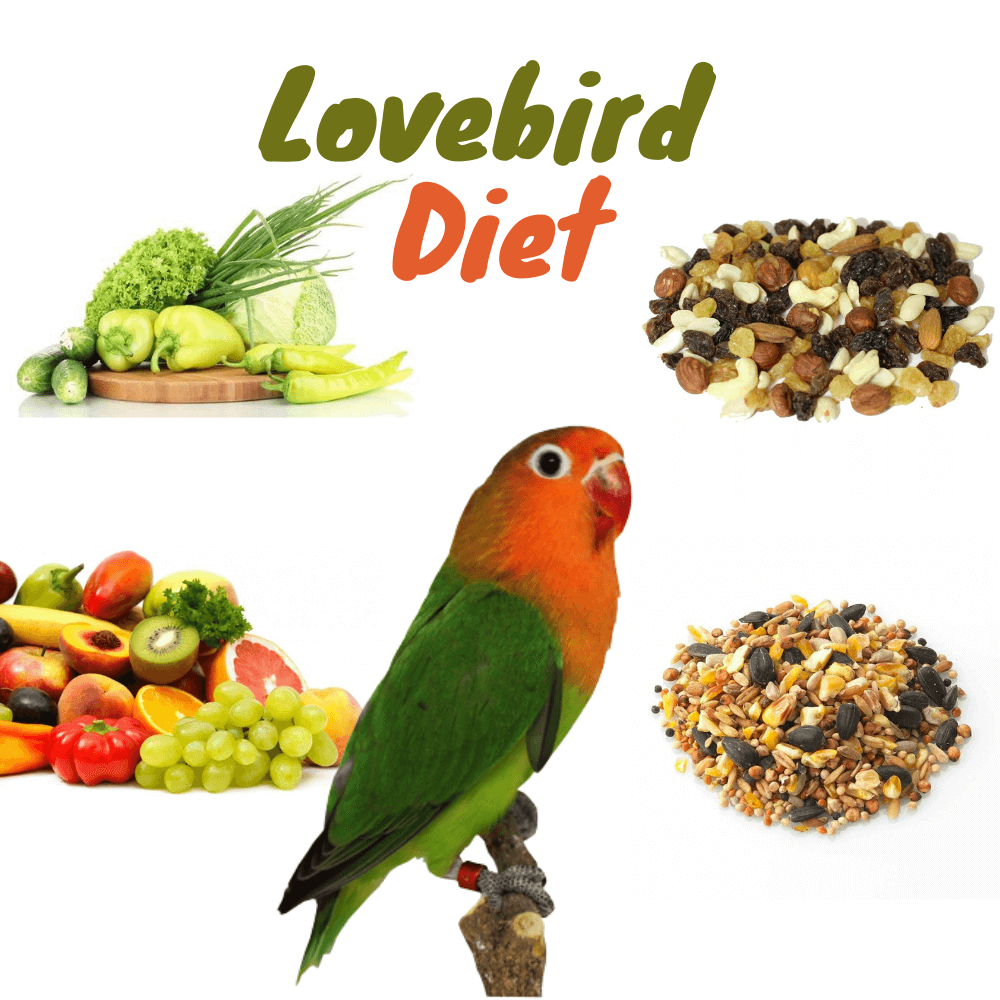
Give him good quality food. A medium-sized bird should have 2-3 teaspoons of pellets or seeds per day.
- You can also give your lovebird a seed mix. He will be able to choose the ones he wants to eat. These mixtures cause your bird to search for the seeds in its bowl, allowing it to swallow different kinds.
Give him fresh fruits and vegetables. The bird should be fed pellets and seed mixes daily. They should not, however, be his only diet, because your lovebird may not have all the nutrients he needs.
Fruits, vegetables, but also sprouted seeds, legumes, flowers (find out about non-toxic species such as dandelion, daisy, groundsel, mallow…), fresh branches, mineral stones, and cuttlebone, protein supplement during the molt.
- Give him healthy fruits like apples, grapes, berries, papaya, and mangoes. Also give him vegetables like carrots, broccoli, zucchini, squash, cooked sweet potatoes, and dark green leafy vegetables like kale and romaine lettuce.
Give him healthy food. These include cooked whole grains, such as brown rice, whole grain pasta, multigrain bread, and sugar-free cereals. You need to clean the bowls before reusing them.
- You can easily share your food with your bird. Simply limit his consumption of fried, fatty, sweet, and salty foods to keep him healthy.
Lovebird Drink

Do not give him alcohol. Do not give him alcohol, chocolate, or caffeinated beverages. These substances can kill your lovebirds, even in small amounts.
- Also avoid giving him avocados, rhubarb, asparagus, onions, raw vegetables (such as beans and peas), and dairy products.
Lovebird Care
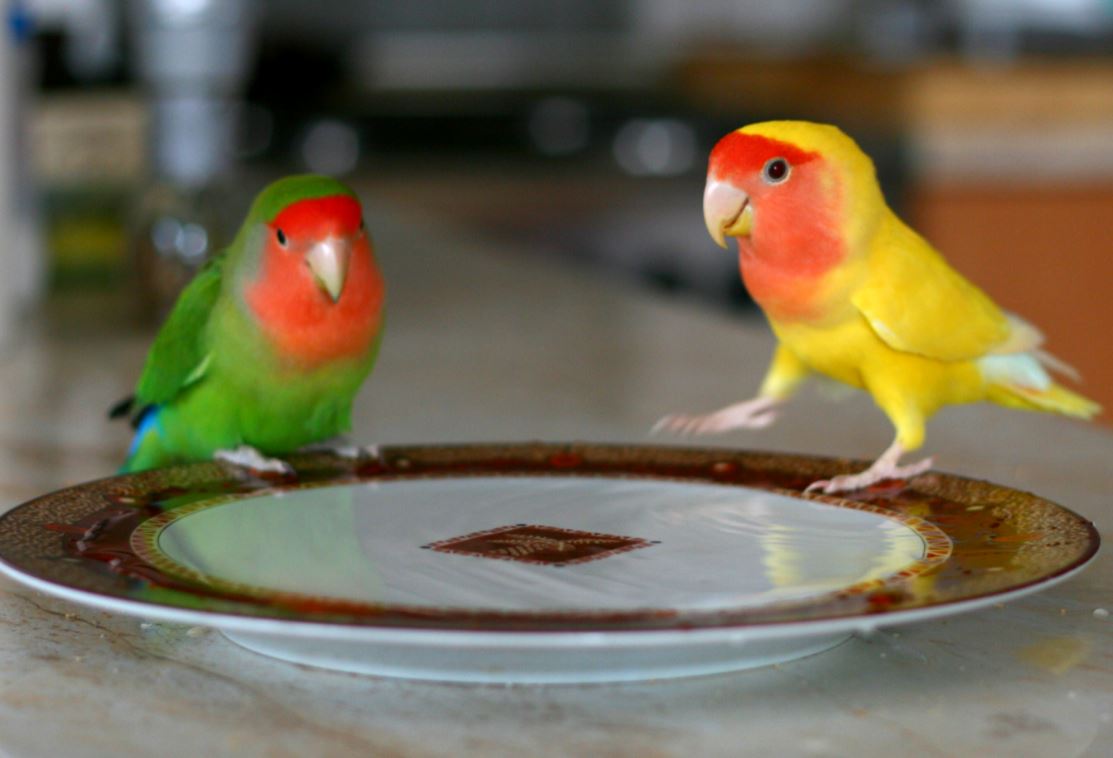
Get him a bathtub to adopt lovebirds. The ideal is to offer a large bathtub in the cage so that the birds can bathe as they please. If they don’t have a bathtub, give them a bath at least once a week. Regular baths are essential to keep your bird healthy and prevent disease. If he does not bathe, his feathers will ruffle and get dirty.
- Use a mist filled with water to give a bath to your lovebirds. Spray the water a few inches above his head to make him think it is raining.
- Do this different times so that your bird gets used to the “rain” and begins to smooth its feathers and clean itself.
- Some do not appreciate being vaporized and will prefer to bathe and will gladly hop in a ceramic plate filled with water, a bowl, a basin. Your lovebirds will probably enjoy staying in the water for a few minutes.

Use toys tailored to your bird’s needs to adopt lovebirds. if you want to adopt lovebirds You can also create your own toys. You’ll find toys suited to your lovebird’s needs at the local pet store, but you can also let him play with pill or pop bottle caps, toilet paper balls stuffed in a small box, or leaves and branches of plants (rose bushes, hibiscus, mulberry, etc.
- Do not put a mirror in the cage of your lovebirds, because it leads to stereotypes.
- Rotate the toys regularly in the cage. Replace those that are damaged, as they may hurt your lovebirds.
- Introduce each new toy to your bird in a neutral place before putting it in the cage so that it can first get used to its presence.
Wash your hands. Wash your hands before and after handling your bird. Germs on a bird can spread to humans and vice versa. They can be a source of serious illness for you and your bird.
Take your bird out of its cage daily. Every day, take your bird out of its cage for a play session. Most birds like to perch on their owner’s shoulders, snuggle up against their neck, or hide in their clothing (sweaters, scarves, etc.).
- When lovebirds are bored, they tend to chew on clothes as well as jewelry and pull buttons. Protect your clothing when your bird is out of its cage by wearing gear that won’t slip. Also, avoid wearing a necklace when it is on your shoulders.
- There are collars specially designed for small birds. They are equipped with a chain that does not risk injuring them and on which toys are attached. You can wear them so that your lovebird always has a toy at its disposal.
Lovebird Training
Train your bird. Train your birds to move on a perch in its cage or on a toy. Train and adopt lovebirds to recall by teaching them to come on demand, a fundamental command to easily move your birds. Games and training break the boredom linked to captive life and reduce territoriality behavior linked to the rise of hormones.
- By training him to move, you teach him to leave his territory without pecking and without losing his calm.
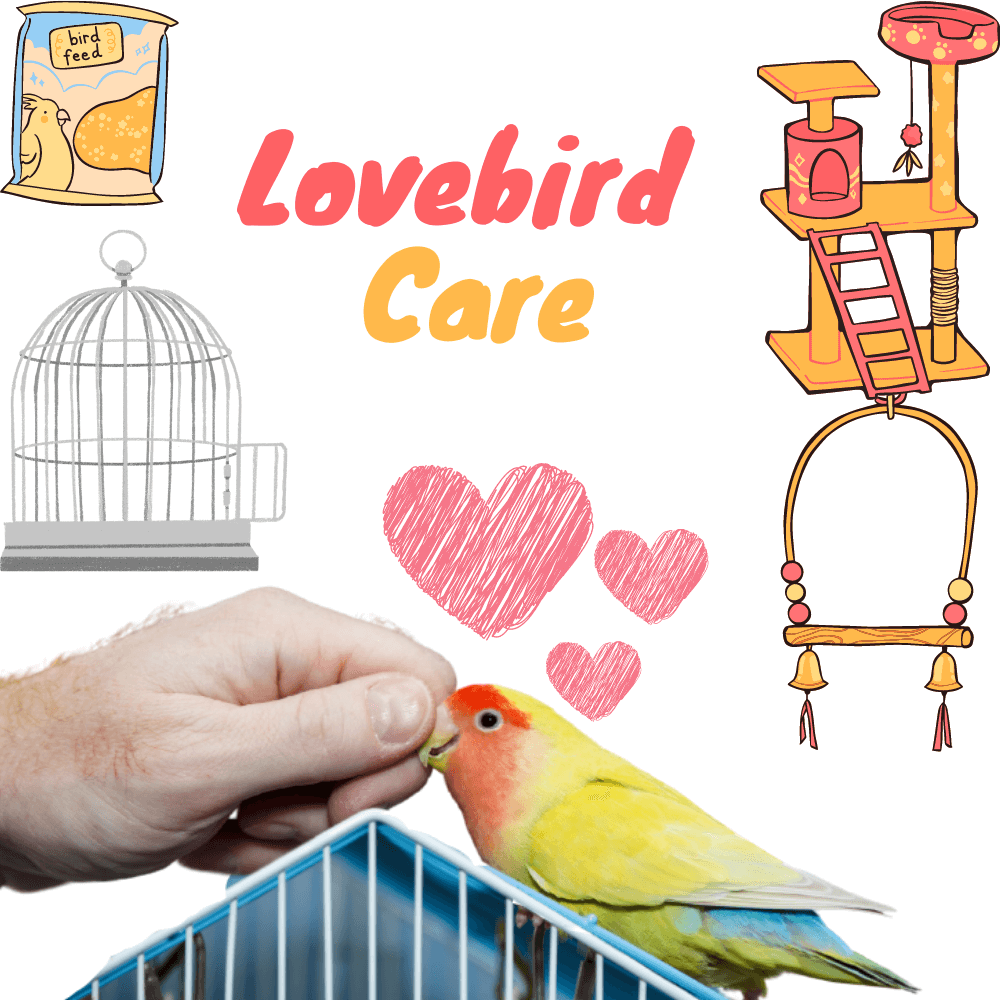
Speak slowly. Speak quietly and move slowly around your bird. Lovebirds are gentle and intelligent birds that are very comfortable around people.
They “talk” like other parrots even if they don’t have such an extensive vocabulary. Talk to your lovebird by speaking in a low voice and encouraging him to answer you or repeat what you say.
- Birds can die of fear. If you frighten your bird, you can induce enough stress in it to kill it. Avoid sudden movements and loud noises in his presence.
- Predators like cats, dogs, and ferrets should never come into contact with your bird.




















